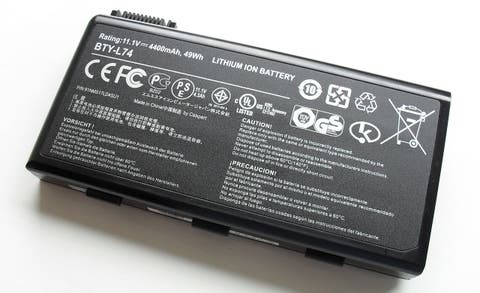Lithium-ion batteries are the most common battery in consumer electronics. They are used in everything from cell phones to power tools to electric cars and more. However, they have well-defined characteristics that cause them to wear out, and understanding these characteristics can help you to double the life of your batteries or more. This is especially useful for products that do not have replaceable batteries.
Battery wear is loss of capacity and/or increased internal resistance. The latter not being a well known concept, over time the battery is able to put out less amperage as the battery ages and eventually the battery is unable to generate power quickly enough to operate the appliance at all even though the battery is not empty.
The standard disclaimers apply, all advice is for informational purposes only, CleanTechnica is not responsible for any damages caused by inaccurate information or following any advice provided. Also, new technology may change the characteristics spoken about, making them less or more relevant in the future or even rendering them obsolete.
- Storage/operating temperature – Part Two
- Discharging – In this article
- Depth of charge – Part Four (upcoming)
- Time spent at near full/empty – Part Four (upcoming)
- Depth of discharge – Part Five (upcoming)
- End Of Life – Part Five (upcoming)
- Summary – Part Six (upcoming)
Discharging Characteristics
Lithium batteries last longest when discharged slowly. Discharge rate is commonly quoted in C rate, 1C meaning going from 100% full to empty (0%) in one hour, 2C meaning 30 minutes, 0.5C meaning 2 hours and so forth). High discharge rates are not ideal, as batteries prefer to be discharged at well below 1C (going from fully charged to fully drained in well over 1 hour). Some chemistries are actually able to handle discharge rates of up to 60C (full to empty in 1 minute) but it’s not good for longevity. There is also generally a capacity vs discharge rate at play, the higher the discharge C rate a battery is rated for, the lower the capacity. For example many power tools use batteries that only hold 25-40% of the capacity of the highest capacity cells available but are able to reliably discharge at 5-10C.
Constant ludicrous speed acceleration will reduce the life of your batteries, but you don’t need to completely baby them during discharge, unlike gasoline-powered vehicles, a super low rate of discharge is not going to net you much utility over standard driving.
Your best bet in increasing longevity here is to try not to punish your batteries. Don’t push them to their limits and they will experience less capacity loss and slower increases in internal resistance over time. Of course this is not always practical. For example, many yard tools give less than an hour of run time on fully charged batteries and there is nothing you can do about this except to not use the tool (which is unrealistic). On the other hand, you can sometimes buy larger batteries for the tool which nets you a lower C/hr discharge rate. Or use powerbanks that don’t drain themselves as quickly when recharging phones away from an outlet — a 15,000mAh USB Powerbank that can charge your phone say three times will have a lower C discharge rate than a 5000mAh USB Powerbank doing the exact same job (but only delivering perhaps one charge).
If you have the ability to choose between different batteries, aim for higher capacity and higher C rated (if you can get this information and the upcharge is reasonable). For an EV you don’t have much choice of battery chemistry, but you can look into longevity information online for that model of vehicle and see how they have fared. In general most modern EVs have been designed well in regards to battery longevity. But don’t take this for granted, do the necessary research before purchase.
Virtually all battery types experience self-discharge over time. Self-discharge is when a battery loses power that is stored in it even though you did not use it for anything. When a battery/battery pack is left unused for long periods, the pack drains itself over time and eventually you end up with a dead battery even though it’s only been sitting on a shelf (or your driveway).
There is self-drain and parasitic drain at play. Self-drain is loss of energy as the chemicals in the battery go from its higher energy charged state to a lower energy discharged state without a load attached. Virtually all batteries experience self-drain, but the rate varies by battery chemistry, temperature, and the age of the battery. The rate of self-drain is not always linear. That said, modern lithium-ion batteries often have a very low self-drain rate, contrasted to parasitic drain. Parasitic drain is caused by circuitry attached to the batter(ies) that slowly drains them in the background when the device is not in active use by its owner. It can sometimes also be caused by leaving a battery on an unplugged charger after its charged. Finally it can also be caused by functions happening in the background for more complex devices like cell phones (screen off waiting for a call/text, WiFi/Bluetooth on etc) and EVs (Sentry mode, listening for the fob signal, conditioning the batteries when the vehicle is not in use and so forth).
Lithium-ion does not typically self-discharge as quickly as other battery types, however, cells and packs (made up of many cells) have control circuity and this inevitably causes some parasitic drain. As each pack type’s control circuitry is custom designed, how much drain any particular pack experiences is not defined and you will have to experiment to figure it out. Some may last weeks, others months, and some could (rarely) last years. Also, self-discharge will vary on whether the battery pack is connected or disconnected from the device it powers (think power tools, e-bikes etc.). In some cases the self-discharge rate soars when it’s left connected vs battery stored separately. Manufacturers rarely specify if this applies to the item in the owner’s manual.
Stay tuned for Part Four, Depth Of Charge
A summary of the terminology used in the battery world:
Charging algorithm = Battery is charged at Constant Current, then near full charge (typically over 80%) the charger switches to Constant Voltage. The charging rate slows until the battery reaches 100% charge. Many EVs modify this algorithm.
C = Capacity of the battery
- Battery ability to output power is measured in 1/C. 1C means the battery drained in one hour, 2C means 30 minutes (1/2 hour), 3C means empty in 20 minutes (1/3 of an hour) and so forth.
- Charging can also be measured in C, 1C means charged in 1 hour, 0.5C charged in 2 hours, 2C charged in 30 minutes and so forth.
Charge rates are not typically linear, the battery is typically charged more rapidly until it reaches the Constant Voltage stage.
Series = Multiple batteries linked in a chain to increase the total voltage of the pack.
Parallel = Multiple batteries linked side by side to increase amperage instead of voltage.
(x)S(x)P configuration = explains how multiple batteries are linked. 4S2P for example means 8 cells, four in Series and two Parallel rows
Volts (V) = Electric potential. Power outlets are measured in volts.
Amps (A)= Number of Coulombs of electrons carrying those volts.
Watts (W)= Volts x Amps. Energy/Power usage is often measured in watts. A kilowatt is 1000 watts. kWh is Kilowatts per hour.
Energy is measured in Joules and is convertible to Watts/second if you have a time component.
Power = Energy over time. Typically measured in Watts. One Joule per second is 1 watt. The same number of Joules or Watts in half the time is twice the power.
Nominal voltage = Voltage used to calculate Watts of a battery.
Battery capacity = How many Ah of power the battery can output (when new).
Load = Device that uses the power from the battery.
Internal resistance of a battery affects its Power output. Increased internal resistance is the reduction in rate of Power output the battery can deliver. Energy output is affected somewhat by increased internal resistance.Appreciate CleanTechnica’s originality? Consider becoming a CleanTechnica Member, Supporter, Technician, or Ambassador — or a patron on Patreon.Have a tip for CleanTechnica, want to advertise, or want to suggest a guest for our CleanTech Talk podcast? Contact us here.
I’ve had an interest in renewable energy and EVs since the days of deep cycle lead acid conversions and repurposed drive motors (and $10/watt solar panels). How things have changed. Also I have an interest in systems thinking (or first principles as some call it), digging into how things work from the ground up. Did you know that 97% of all Wikipedia articles link to Philosophy? A very small percentage link to Pragmatism. And in order to put my money where my mouth is I own one Tesla share.
CLEANTECHCAL






